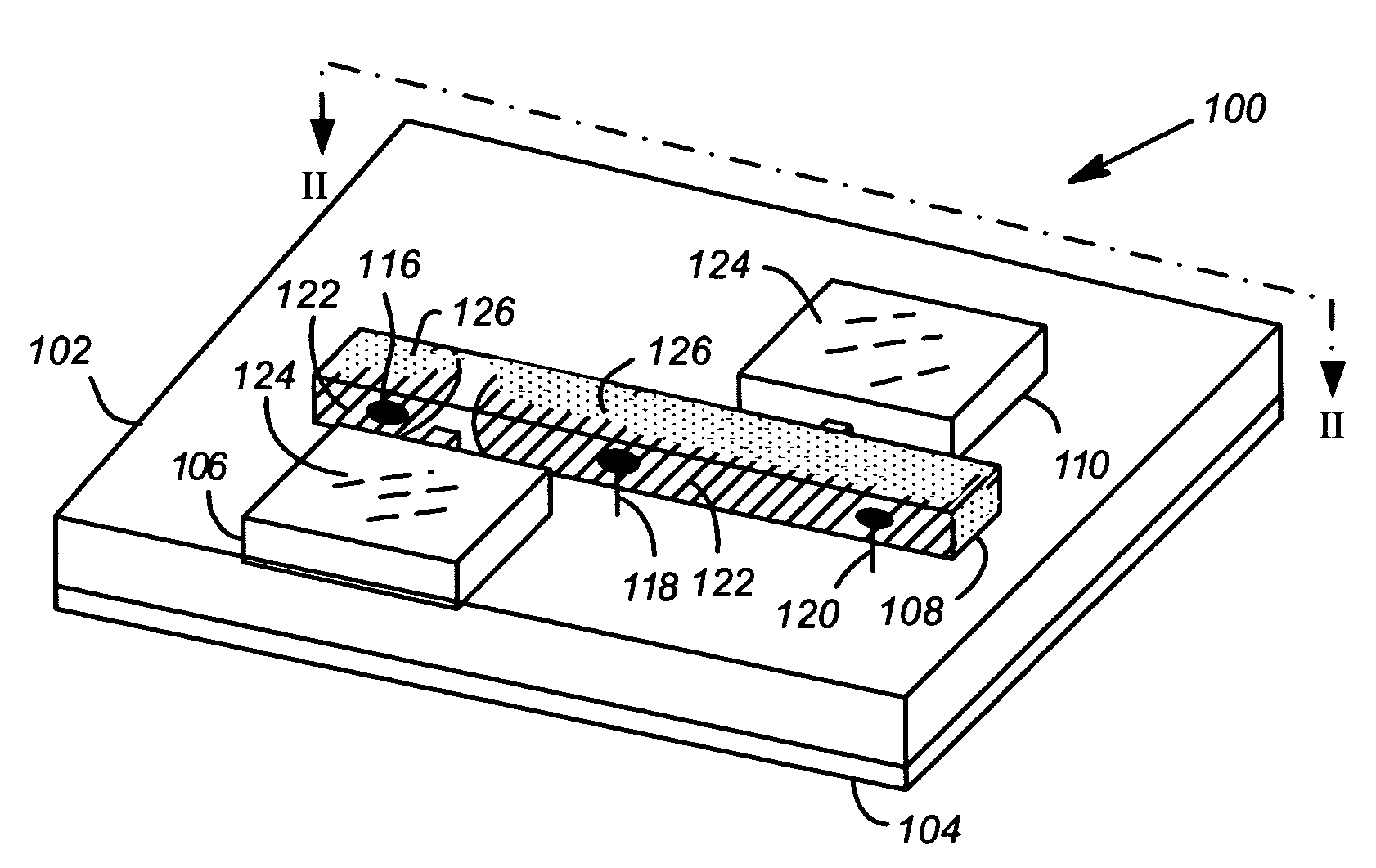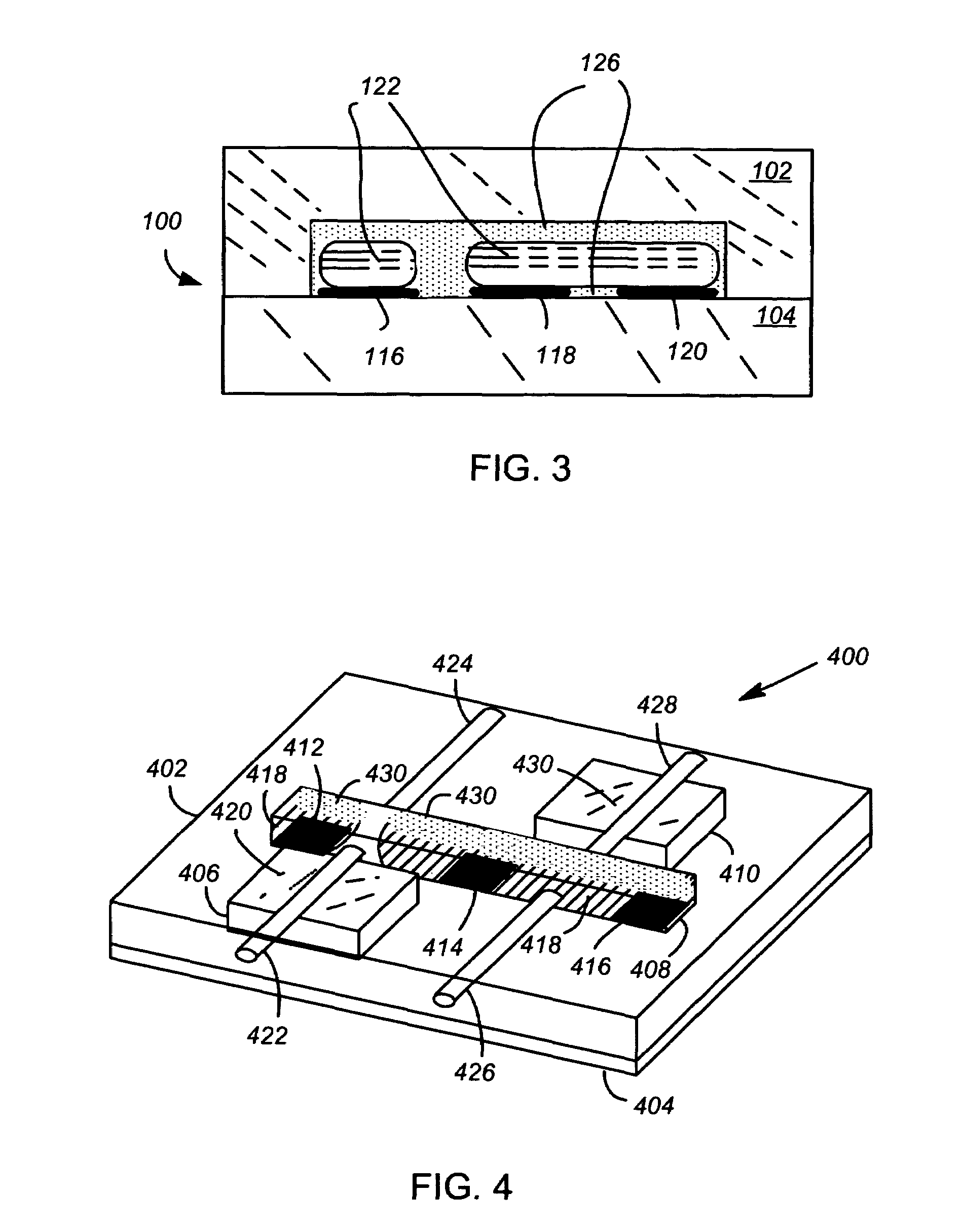Reduction of oxides in a fluid-based switch
a fluid-based switch and oxide reduction technology, which is applied in the direction of relays, instruments, optical elements, etc., can solve the problems of reducing the efficiency of the switch, and reducing the energy required for the switch to change state, so as to reduce the formation of oxides
- Summary
- Abstract
- Description
- Claims
- Application Information
AI Technical Summary
Problems solved by technology
Method used
Image
Examples
Embodiment Construction
[0023]A fluid-based switch is one in which a switching fluid is moved between different states to perform the switching function of the switch. For example, in an electrical switch, a switching fluid may be moved between different states to electrically couple and decouple pairs of electrodes; and in an optical switch, an opaque switching fluid may be moved between different states to couple and decouple pairs of wettable pads, thereby blocking and unblocking one or more light paths.
[0024]One impediment to the manufacture and operation of a fluid-based switch is oxides. Oxides can lead to poor switch performance, and even switch failure, because they lessen or prevent a switching fluid from wetting surfaces it is supposed to wet (e.g., electrodes or wettable pads), and they increase the likelihood that a switching fluid will wet surfaces that it should not (e.g., the walls of a switching fluid cavity).
[0025]Disclosed herein are various ways to reduce or eliminate the formation of ox...
PUM
 Login to view more
Login to view more Abstract
Description
Claims
Application Information
 Login to view more
Login to view more - R&D Engineer
- R&D Manager
- IP Professional
- Industry Leading Data Capabilities
- Powerful AI technology
- Patent DNA Extraction
Browse by: Latest US Patents, China's latest patents, Technical Efficacy Thesaurus, Application Domain, Technology Topic.
© 2024 PatSnap. All rights reserved.Legal|Privacy policy|Modern Slavery Act Transparency Statement|Sitemap



